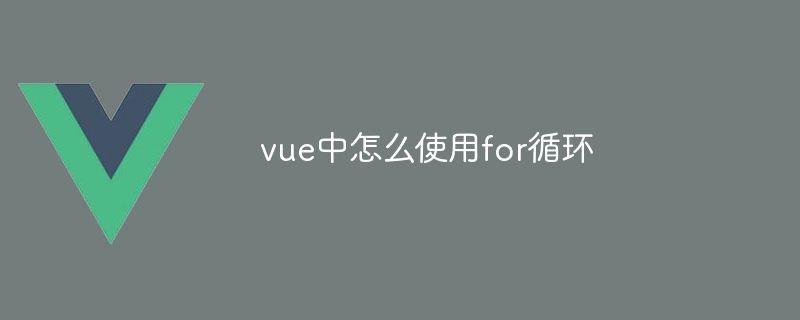
The for loop in Vue can be used to traverse arrays or objects. There are two syntaxes: v-for directive and v-for range attribute. The v-for directive uses the item alias to access the current element, while the v-for range attribute uses the i alias to access the index of the current element. Within a loop, you can use the key attribute to specify a unique key that identifies each element, helping to track changes. The $index property can be used to get the index of an element.

For loop in Vue
Using the for loop in Vue can traverse an array or object, and in each Perform operations on elements.
There are two syntaxes to create a for loop:
v-for directive
<code class="html"><template v-for="item in items"> <!-- 模板内容 --> </template></code>
where:
items is the array or object to be traversed item is the alias of each element in the loop v-for Range attribute
<code class="html"><template>
<div v-for="i in 5">
<!-- 模板内容 -->
</div>
</template></code>Where:
i is the index of each element in the loop, starting from 0Usage
In a loop, you can use item or i to access the current element. For example:
<code class="html"><ul>
<li v-for="item in items">{{ item }}</li>
</ul></code> This will create a list where each element is the value of the corresponding element in the items array.
Key
When iterating over an object, you can use the key attribute to specify a unique key to identify each element. This helps Vue track changes to elements. For example:
<code class="html"><ul>
<li v-for="item in items" :key="item.id">{{ item.name }}</li>
</ul></code>Index
To get the index of an element, you can use the $index attribute. For example:
<code class="html"><ul>
<li v-for="item in items">{{ $index }} - {{ item }}</li>
</ul></code>This will create a list with each element with its index and value.
The above is the detailed content of How to use for loop in vue. For more information, please follow other related articles on the PHP Chinese website!